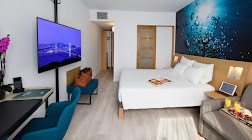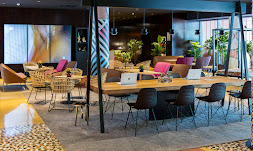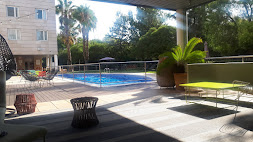Venue & Hospitality
Conference Dates: April 03-04, 2023
Hotel Services & Amenities
- Audio/Visual Equipment Rental.
- Business Center.
- Business Phone Service.
- Complimentary Printing Service.
- Express Mail.
- Fax.
- Meeting Rooms.
- Office Rental.
- Photo Copying Service.
- Secretarial Service.
- Telex.
- Typewriter.
- Video Conference.
- Video Messaging.
- Video Phone.
- ATM.
- Baggage Storage.



Transportation
Driving Directions to
Route Map
About City
Barcelona
The first human settlements in Barcelona date back to Neolithic times. The city itself was founded by the Romans who set up a colony called Barcino at the end of the 1st century BC. The colony had some thousand inhabitants and was bounded by a defensive wall, the remains of which can still be seen in the old town.
For over 200 years, Barcelona was under Muslim rule, and, following the Christian recon quest, it became a county of the Carolingian Empire and one of the main residences of the court of the Crown of Aragon. The fruitful medieval period established Barcelona's position as the economic and political Centre of the Western Mediterranean. The city's Gothic Quarter bears witness to the splendor enjoyed by the city from the 13th to the 15th centuries.
From the 15th to 18th centuries Barcelona entered a period of decline, while it struggled to maintain its economic and political independence. This struggle ended in 1714, when the city fell to the Bourbon troops and Catalonia's and Catalans' rights and privileges were suppressed.
A period of cultural recovery began in the mid-19th century with the arrival of the development of the textile industry. During this period, which was known as the Renaixença, Catalan regained prominence as a literary language.
The 20th century ushered in widespread urban renewal throughout Barcelona city, culminating in its landmark Example district, which showcases some of Barcelona's most distinctive Catalan art-nouveau, or modernist, buildings. The Catalan Antoni Gaudi, one of the most eminent architects, designed buildings such as the Casa Mila (known as La Pedrera, the Catalan for stone quarry), the Casa Batlló and the Sagrada Família church, which have become world-famous landmarks.
The freedoms achieved during this period were severely restricted during the Civil War in 1936 and the subsequent dictatorship. With the reinstatement of democracy in 1978, Barcelona society regained its economic strength and the Catalan language was restored. The city's hosting of the 1992 Olympic Games gave fresh impetus to Barcelona's potential and reaffirmed its status as a major metropolis. In 2004, the Forum of Cultures reclaimed industrial zones to convert them into residential districts. An example of the renewed vigor with which Barcelona is looking towards the 21st century
Geographical Location
Barcelona is the second largest city of Spain, which itself is located at southwestern Europe. Barcelona is present in the province of Catalonia and is its capital. At its northeast, lies the Mediterranean Sea, towards its southwest lies the Lloregat river and the Bezos river lies at its north. The official area of Barcelona is 170 sq. km out of which 101 sq. km is occupied. 120 km away from the border of Barcelona lies France's border.
Some of the city attractions are:
Park Guell
Palau Guell
Casa Mila
Casa Vices
Sagrada Família
Casa Batlló
Palau de la Musica Catalana
Hospital de Sant Pau
Barcelona Cathedral
Magic Fountain of Montjuic
W Barcelona (Hotel Vela)
Torre Agbar
Statue of Christopher Columbus
Plaça de Catalunya
La Illa de la Discordia
Barcelona's beach promenade in La Barceloneta and Somorrostro Beach
